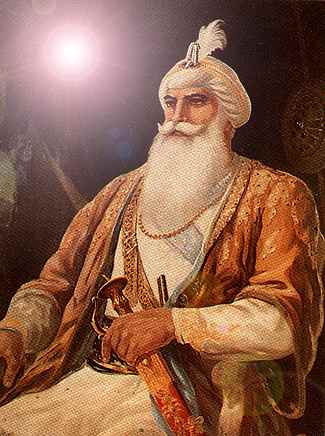
In.1728 AD the then emerging leader of the nascent Sikh community, Kapur Singh, while visiting Delhi to pay homage to Mata Sundri, was deeply impressed by the deportment and piety of young Jassa Singh. Soon Jassa Singh and his mother were taken into his fold. Tradition has it that on Jassa Singh's departure from Delhi, young Jassa Singh was blessed by Mata Sundri, presented with weapons and a prophecy made that Jassa Singh would achieve fame among the Sikhs and that the symbols of royalty and honour would accompany him in the days ahead. In his youth, Jassa Singh worked with Nawab Kapur Singh but later set up his own AhIuwalia misl.
In 1748 AD at a Sarbat Khalsa meeting Nawab KapurSingh constituted the fighting body of Sikhs -the Dal Khalsa and appointed Jassa Singh Ahluwalia as its leader. A title Sultan-u!--Qaum . (King of the Community) was subsequently accorded to him by his followers.
It was Ahmed Shah Abdali's inroads into Punjab from 1748-1767 AD that exercised a very decisive influence in the history of the Sikh power under the stewardship of Jassa Singh. Among the exploits the important ones are : Liberation of Amritsar (1741), capture of Lahore (1761), Liberation of Captives (1761) This earned him the appellation of "BandiChhor" rebuilding of the Golden Temple (1764), Occupation of Kapurthala (1779) and capture of Red Fort in Delhi (1783).
Jassa Singh passed away in 1783 AD; As a rare gesture of the recognition of his services to the Panth, his mortal remains were cremated in the holy precints of Baba Atal Amtirsar where his smadh (cenotaph) exists this day.